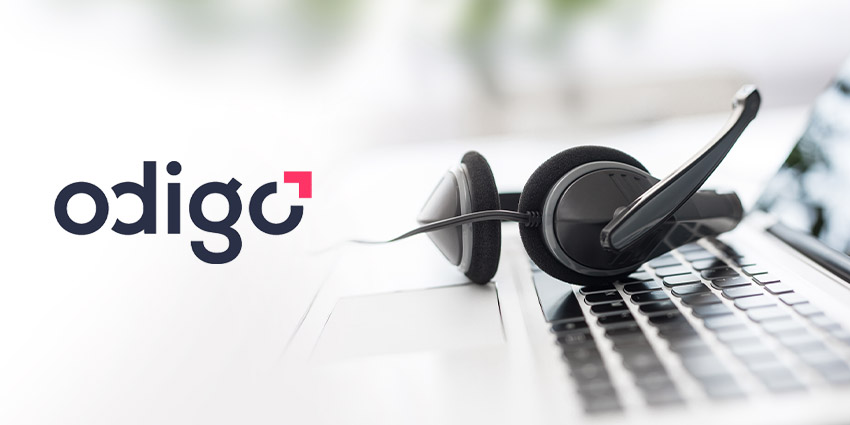Christmas is the most wonderful time of the year. Yet, for many contact centres, it is the most challenging. High contact volumes, excruciating on-hold times, and recruitment woes do little to spread festive cheer. To make matters worse, the ever-impending threat of COVID-19 and global lockdowns only add another chink to the contact centre’s weary armour.
However, another worrying trend made its mark this year: rising customer expectations. Thanks to CX leaders pushing the service experience further, many customers now expect contact centres to offer online digital services, seamless IVR experiences, and journey personalisation.
Unfortunately, this is just the tip of the iceberg. Throw a connected social strategy, longer opening times, and enhanced data protection into the mix, and many contact centres face an uphill struggle to keep up with new customer demands.
In a CX Effect report, Martin Hill Wilson, a customer service & AI engagement strategist, acknowledges this dynamic by comparing contact centre transformation to a long train:
“There are a few companies right up there at the front, while more are at the back. Yet, the majority of us are trundling along in the middle, being pulled forwards by the front runners, hoping to avoid getting left behind”
During the Christmas period, the phenomenon that Hill Wilson highlights became more evident than ever before. Yet, after a busy festive season, now is the time to take a step back, create some breathing space, and assess how to sleigh the New Year.
Controlling the Chaos
Constant firefighting often results in contact centres having little opportunity for future planning. Unfortunately, unruly contact volumes fan the flames. Improving forecasts is the obvious answer. Controlling shrinkage, experimenting with multiple forecasting models, and enhancing data quality will help. Nevertheless, contact centres cannot rely solely on the workforce management (WFM) team. After all, the first rule of forecasting is that all forecasting is wrong.
No matter how skilled the WFM team, contact centres will – every so often – face unexpected peaks in contact volumes. The result is long hold times. Luckily, vertical queuing provides another tonic. Yet, it is crucial to use such a system correctly. As Richard Gregory, a senior account executive at Odigo, tells us:
“Virtual queuing is a good option, providing it is managed correctly. There is nothing worse than if a customer is told their call will be answered in 35 minutes and two and a half hours later they are still waiting”
“These queuing technologies have become more intelligent thanks to AI and embedded automation, allowing companies to be more accurate timings. But it doesn’t mean these systems shouldn’t be monitored to structure customer expectations accordingly.”
Gregory refers to the importance of caller intent, which goes hand-in-hand with customer expectation. Remember, understanding what callers want is a critical part of CX. Not only does it highlight journey pain points but contact centres can develop more sophisticated omnichannel strategies.
Meeting Omnichannel Demands
When developing an omnichannel strategy, contact centres often fail to overcome hurdles, such as tracking the conversation history of customers and moving interactions across channels.
In falling short of these aims, contact centres do not deliver the personalised, digital-friendly service that modern customers expect. Customer anger then builds, and contact centre agents bear the brunt.
Such situations are no rarity across the contact centre industry. Many operations still suffer from working with solutions that do not support a single view of the customer. Channel siloes and budget restrictions also make meeting omnichannel demands more difficult.
To illuminate the detrimental impact that these issues have on CX, consider the following scenario:
A customer waits in a long queue to answer a relatively simple query, as the company chatbot cannot help them with an issue that involves a specific online order. Upsetting the customer further, the voice bot at the front of the IVR fails for the same reason. Finally, they talk to an agent, but they work in the wrong department. Again, the customer waits in the queue before eventually reaching the correct agent. Yet, they have no history of the customer’s past orders or contact centre conversations.
In this scenario, a simple innovation that escalates customers from chatbots to human support, carrying across the conversation transcript, can save so much pain. Contact centres may go further by implementing a bot fuelled by speech analytics. Such technology recognises intent, ensuring that customers pass through to the most appropriate department.
Analytics Demystifies Customer Intent
Providing digital solutions, such as chatbots, offers customers choice. Yet, understanding what customers want to do must come before contact centres add to their channel mix.
Uncovering why customers contact the company is crucial. Disposition data sometimes helps. Historically, however, it often proves unreliable. Speech and text analytics offers a better alternative, automatically tagging customer contacts and relieving pressure on agents.
Now understanding their top contact reasons, contact centre leaders can assess the process agents take to answer customer contacts and the journeys that lie behind them. In doing so, businesses expose opportunities to automate, simplify, remove, and improve customer contacts. Contact centres may then design seamless journeys, which align with new expectations.
Of course, these may need new investment. Yet, the analytics findings enable cost models that highlight potential ROI. These are critical to building the best business cases.
However, following a process of this ilk is time-consuming, and contact centres must not cut corners. As Richard Gregory says:
“If businesses are investing in AI and analytics, take the time to properly get to grips with the findings. They provide the best possible insights to a customer base. A simple change or tweak here and there could make a huge difference to a CX strategy. The bottom line is really to ensure these technologies are utilised accordingly.”
Also, make sure that the contact centre utilises channels correctly – when creating journey maps for critical contact reasons. Doing so maturity to an omnichannel solution. To get started, consider which channel lends itself best to the query.
Amazon adopts a similar approach, signposting customers to the most appropriate channel through their website. Such a strategy aligns with the behaviour of most modern customers, who tend to explore the company’s website before making contact.
Odigo Enables Brands to Meet New Expectations
Itching to improve CX and meet new expectations? Odigo provide solutions that drive down contact volumes, support omnichannel strategies, and bring customer intent to life.
Discover their full range of cloud contact centre solutions by visiting: www.odigo.com







